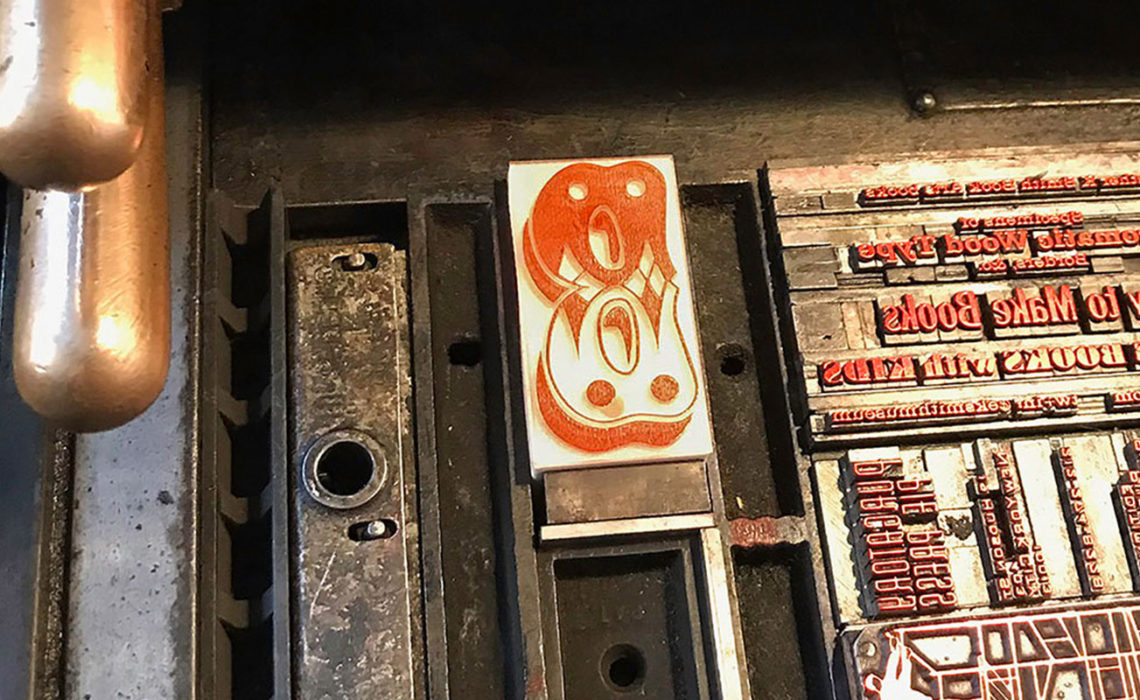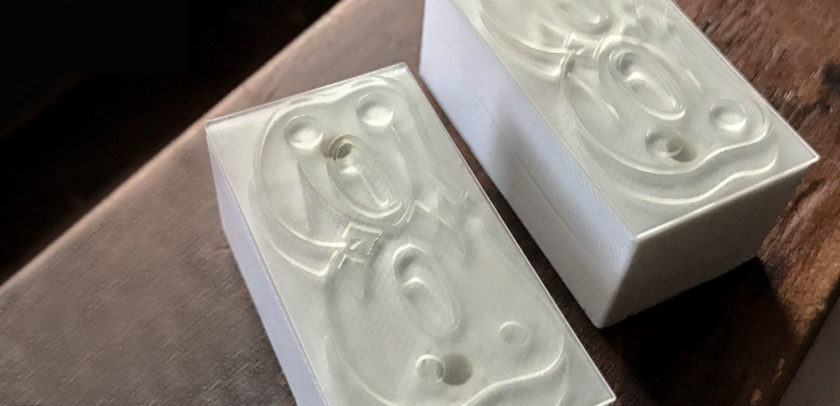
The mission of @thepostdigitalprintmaker community, founded by Phyllis and Victor Merriam, is to share the work of printmakers who have taken up the challenge of incorporating emerging technologies into their artistic practices. After 4 years, it has grown to a community of over 7, 000 artists worldwide. Their personal practice incorporates the traditional methods of etching, woodcut, paper lithography and photopolymer plates with the more recent technologies of stereolithography, fused deposition modeling, laser cutting, and CNC routing. They constantly wrestle with the integration of technology in a way that allows them to remain in control of the artistic process. Phyllis and Victor teach their techniques at the Manhattan Graphics Center, NYC and The Robert Blackburn Printmaking Workshop, NYC. As part of the workshops, they teach how to use a service bureau to fabricate 3D printed plates.
Can you explain chromatic wood type?
Chromatic wood type became very rare after the early 20th century; much of it was destroyed. William H Page was the major manufacturer of chromatic wood type — letters relief-printed from multiple blocks that overlap to make additional colors — in the mid to late nineteenth century.
Could you please describe your work with Purgatory Pie Press?
Purgatory Pie Press is one of the longest running artist presses, founded by letterpress printer Dikko Faust. He and artistic director, Esther Smith make limited editions and artists books. Esther designed and produced a reprint of W H Page’s 1874 Specimens of CHROMATIC WOODTYPE with Rizzoli publishers. We decided to collaborate to recreate a W H Page chromatic typeface. Dikko researched Page and found his original drawings of Etruscan. Dikko also found examples of the typeface printed in period British circus posters. There are no examples of original Etruscan type surviving today that we know of.
Why did you decide to use 3D printing and Shapeways?
We wanted to develop a process that was consistent and economical. We were faced with problems that could only be solved by repeated experimentation. We had prototypes made and remade until we had a working piece of type that could be used on a traditional letterpress. You can imagine the excitement of successfully printing the piece for Esther and Dikko’s talk at the Metropolitan Museum in 2018 — a 3D printed piece of type and traditional wood type both designed in the 1870s printed together on a press from the 1940s. Many antique wood type collections are incomplete and unusable. The process we developed can be used to create the missing type with 3D printed blocks in any size needed.
What stages of the process did you use Shapeways for?
We used Shapeways for our early and final stage prototyping. In order for the type to work, it had to integrate seamlessly with the original vintage type.

What challenges did you face in regards to finding the right materials?
We needed to be able to create prototypes in different materials and test them on the press. We needed a material that could reproduce fine detail with a truly smooth surface. The press produces a sizable force on the plastic typeface. In order for the type to work properly, it must be strong and dimensionally stable. The plastic must also be durable to stand up to repeated use.
How did Shapeways help you address these challenges?
Shapeways provided us with the ability to test with diverse materials with rapid turn around so that we could develop a working repeatable process. The ability to test different materials and manufacturing methods in one place in a cost-effective manner was a tremendous benefit. Shapeways gave us access to industrial scale printers in the prototype phase so that we could scale up the process without having to repeat testing. The result was impressive: We printed over 200 BID bookmarks with no noticeable degradation of quality and the block is still usable for future use.
Want to learn how Shapeways can support your business with rapid prototyping and high-quality 3D printing? Partner with Shapeways to elevate your project with on-demand 3D manufacturing.


